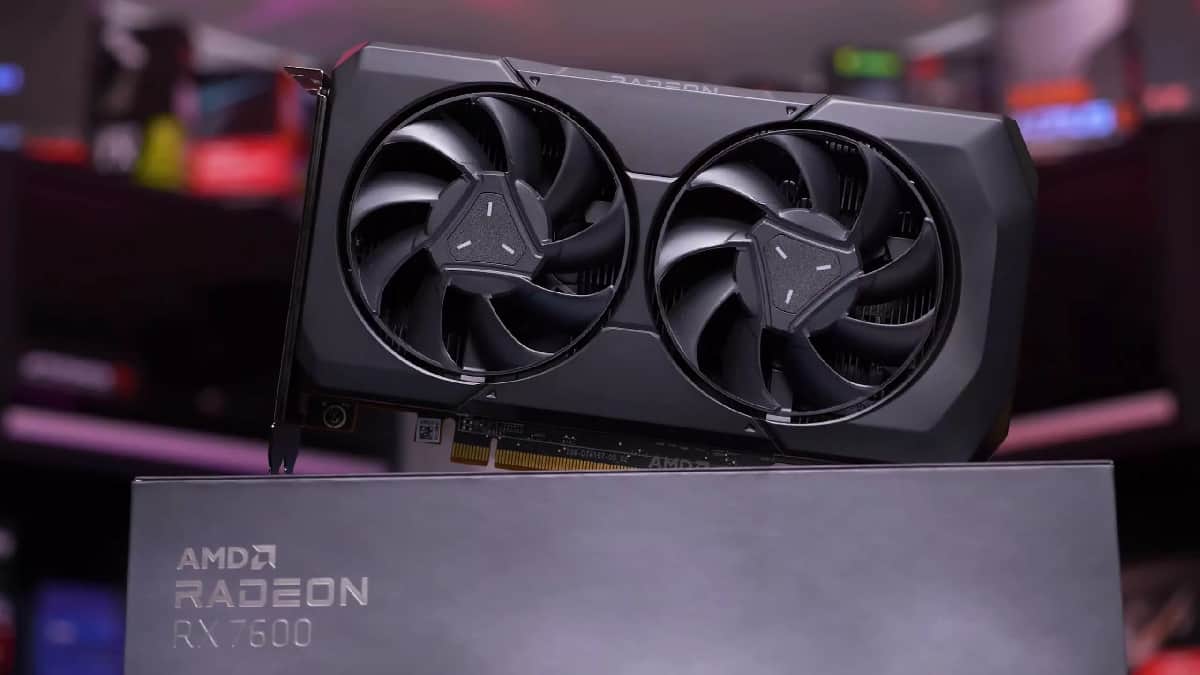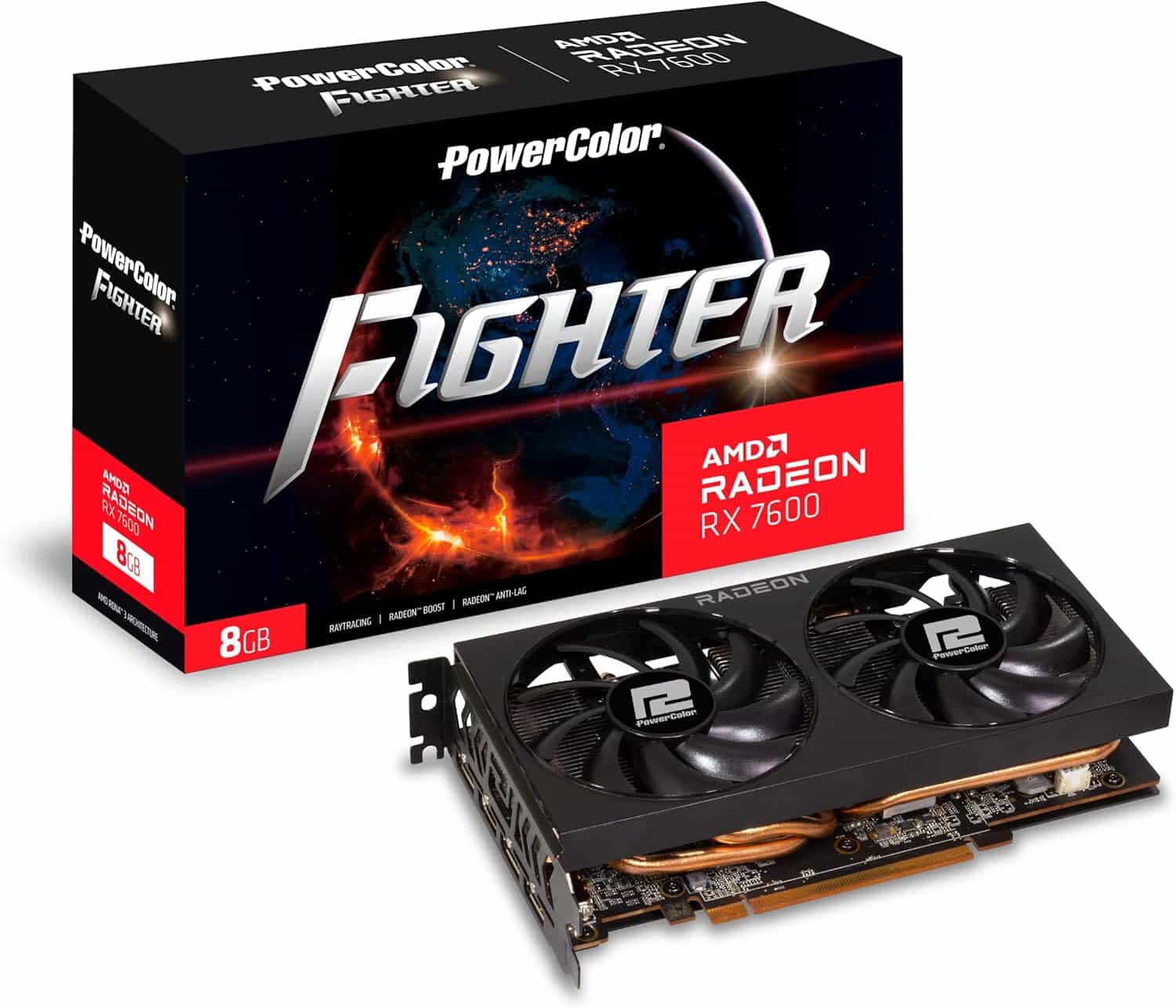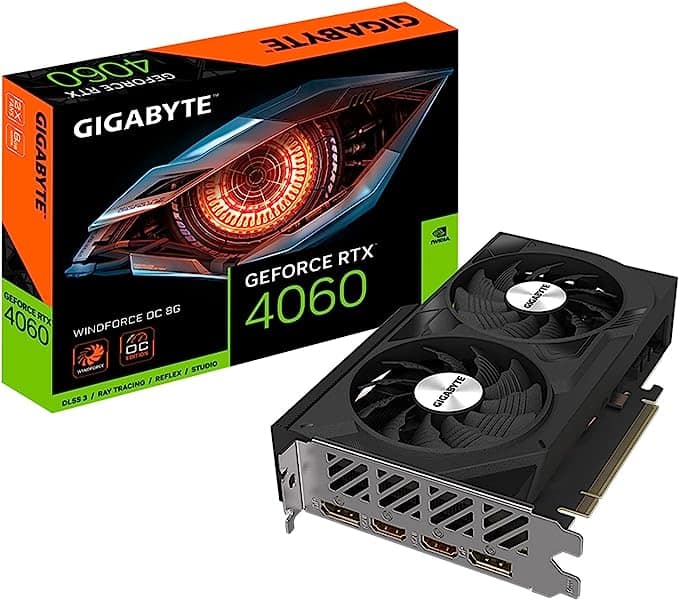RTX 4060 vs RX 7600 – which is better for you?

Table of Contents
With the world of gaming consistently pushing the boundaries of graphical prowess, having a powerful GPU is more important than ever. In the eternal showdown between Nvidia and AMD, today we’ll be examining two of their recent offerings in the entry-level gaming scene: the Nvidia GeForce RTX 4060 vs the RX 7600 by AMD.
The RX 7600, part of AMD’s RDNA 3 lineup, hasn’t seen as much love as its Nvidia counterpart, but let’s dive deeper into the specifications and performance of both GPUs to see how they stack up against each other.
Prime Day may have closed its doors, but that hasn't stopped great deals from landing on the web's biggest online retailer. Here are all the best last chance savings from this year's Prime event.
- Sapphire 11348-03-20G Pulse AMD Radeon™ RX 9070 XT Was $779 Now $719
- AMD Ryzen 7 7800X3D 8-Core, 16-Thread Desktop Processor Was $449 Now $341
- Skytech King 95 Gaming PC Desktop, Ryzen 7 9800X3D 4.7 GHz Was $2,899 Now $2,599
- LG 77-Inch Class OLED evo AI 4K C5 Series Smart TV Was $3,696 Now $2,996
- AOC Laptop Computer 16GB RAM 512GB SSD Was $360.99 Now $306.84
- Lexar 2TB NM1090 w/HeatSink SSD PCIe Gen5x4 NVMe M.2 Was $281.97 Now $214.98
- Apple Watch Series 10 GPS + Cellular 42mm case Smartwatch Was $499.99 Now $379.99
- AMD Ryzen 9 5950X 16-core, 32-thread unlocked desktop processor Was $3199.99 Now $279.99
- Garmin vívoactive 5, Health and Fitness GPS Smartwatch Was $299.99 Now $190
*Prices and savings subject to change. Click through to get the current prices.
RTX 4060 vs RX 7600: Specs
Starting with the memory, both GPUs come with 8GB of GDDR6 memory. This means neither one has a distinct advantage in terms of raw memory capacity, which is a significant factor for rendering high-quality textures and complex in-game elements.
Both graphics cards have a 128-bit memory bus, allowing for equivalent bandwidth for data transfer between the GPU and memory. In terms of pure data transfer rates, these cards stand on equal footing.
| Specs | RTX 4060 | RX 7600 |
|---|---|---|
| Architecture | AD106 | Navi 33 |
| Cores | 3072 | 2048 |
| Texture Units | 120 | 128 |
| Raytracing Cores | 30 | 32 |
| Base Clock | 1830 MHz | 1720 MHz |
| Boost Clock | 2535 MHz | 2655 MHz |
| Memory | 8GB GDDR6 | 8GB GDDR6 |
| Memory Interface | 128-bit | 128-bit |
| TDP | 115 W | 165 W |
| Price | $299 | $269 |
Where we begin to see some divergence is in the clock speeds. The base clock speed of the RTX 4060 is 1830 MHz, higher than the 1720 MHz of the RX 7600. However, the AMD Radeon RX card has a slightly higher boost clock speed at 2655 MHz compared to the 2535 MHz of the RTX 4060.
The RX 7600 also has a higher TDP of 165 W compared to the RTX 4060’s 115 W. This is a bit unusual for AMD GPUs, which typically have lower power consumption.
Next, let’s examine the number of cores. The Ada Lovelace architecture card has a total of 3072 cores, compared to the RX 7600’s 2048 cores. Furthermore, the RTX 4060 has more ray-tracing cores than the RX 7600 (30 vs. 32), which might give it an advantage in games utilizing ray-tracing technology.
In conclusion, based on the specifications alone, the RTX 4060 seems to hold a slight edge over the RX 7600, especially in terms of core count. However, specs don’t tell the entire story. Let’s delve deeper into their performance next.
RTX 4060 vs RX 7600: Performance
When the RTX 4060 Ti was released, the tech world was flooded with benchmark comparisons between it and the RX 7600. While it was no surprise that the more powerful 4060 Ti generally outperformed the RX 7600, the disparity was greater than many had expected.
When it comes to the RTX 4060 and RX 7600, though, things become a bit more nuanced. At first glance, the two GPUs appear very similar in terms of raw specs. But this is where the raw numbers can be deceiving, and why we need to look at real-world performance to truly understand which GPU stands tall.
A key factor to consider here is the unique technologies each brand brings to the table. Nvidia’s RTX 4060 features DLSS 3.0 and Ray Tracing 3.0 technology, two significant advantages when it comes to gaming performance and FPS.
In light of these advanced technologies, it’s clear that Nvidia’s RTX 4060 holds the upper hand in this comparison. While the RX 7600 might be a competent performer in its own right, the inclusion of DLSS and Ray Tracing in the RTX 4060 makes it the more future-proof option for gamers, ensuring top-notch performance in the latest games.
RTX 4060 vs RX 7600: Price
The AMD RX 7600, priced at $269, comes in slightly cheaper than the Nvidia RTX 4060 which costs $299. It’s undeniable that AMD offers a compelling price point for budget-conscious gamers, making it a good value proposition for entry-level 1080p gaming.
However, if you’re able to stretch your budget a bit further, the extra investment in the RTX 4060 could pay off handsomely. For just $30 more, you get access to Nvidia’s proprietary technologies like DLSS and Ray Tracing. The price-to-performance ratio of the RTX 4060, in this case, seems to be worth the extra spend.
RTX 4060 vs RX 7600: Conclusion
When comparing the Nvidia RTX 4060 and AMD RX 7600, your decision should hinge on both your budget constraints and gaming expectations. If sticking to a tight budget is your top priority, the AMD RX 7600 offers reasonable 1080p gaming performance for a slightly lower price.
On the other hand, if you can allocate a bit more to your GPU budget, the Nvidia RTX 4060 provides a noticeable improvement in gaming performance. This is especially true for games that leverage DLSS and Ray Tracing technologies. The RTX 4060 represents a more future-proof option, offering enhanced features that will be increasingly utilized in next-gen games.
FAQ
Will the RTX 4060 be worth it?
the RTX 4060 will be worth it for many gamers, particularly those looking to play at 1080p resolution. It offers a strong price-to-performance ratio, access to cutting-edge Nvidia technologies like DLSS and Ray Tracing, and decent performance in modern games. However, its value is contingent upon individual gaming needs and budget considerations.



